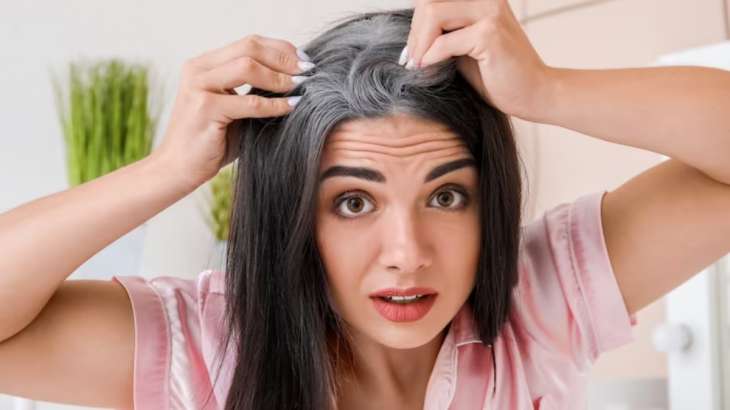Greetings, dear readers! Have you ever wondered why some people sport a head full of silver strands at a young age? That's right; we're talking about premature graying of hair. It's a fascinating topic that has captured the curiosity of many. Let’s delve into the causes behind premature graying, share some relevant statistics, and provide you with practical tips to prevent it. So, let's embark on this hair-raising journey together!
First things first, let's address the burning question: at what age does premature graying occur? Well, it's a bit tricky as it varies from person to person. Traditionally, graying hair was associated with aging, typically occurring around the mid-30s or later. However, in recent times, a growing number of individuals are experiencing premature graying, which can manifest as early as the teenage years or during one's 20s and 30s.
Some intriguing statistics.
While it's challenging to pinpoint exact figures, studies suggest that around 50% of people have at least 50% grey hair by the age of 50. Moreover, research indicates that premature graying affects around 20% of the global population.
These numbers highlight the significance of understanding this phenomenon and exploring ways to prevent it.
So, what are the causes behind premature graying of hair?
Genetics play a crucial role, as premature graying tends to run in families. If your parents or close relatives experienced early graying, there's a higher likelihood of you inheriting the trait. Besides genetics, several other factors contribute to premature graying, such as:
1. Stress: High levels of stress can disrupt the normal functioning of melanocytes, the cells responsible for producing hair colour. This disruption can accelerate the graying process.
2. Nutritional Deficiencies: Inadequate intake of essential nutrients, particularly vitamins B12, D, and E, as well as minerals like copper and iron, can impact melanin production and contribute to premature graying.
3. Medical Conditions: Certain medical conditions, such as thyroid disorders, vitiligo, and autoimmune diseases, have been linked to premature graying.
4. Lifestyle Choices: Smoking, excessive alcohol consumption, and a poor diet lacking in healthy fats and antioxidants can potentially hasten the graying process. While we can't turn back time, we can certainly take steps to slow down or prevent premature graying.
Here are some practical tips you can incorporate into your daily routine:
1. Balanced Diet: add plenty of fruits, vegetables, lean proteins, and healthy fats. Opt for foods rich in vitamins and minerals that support hair health, such as leafy greens, nuts, seeds, fish, and eggs.
2. Stress Management: engage in activities such as regular exercise, meditation, and deep breathing exercises. It's important to find what works best for you.
3. Hair Care: Treat your locks gently and avoid excessive heat styling, harsh chemical treatments, and tight hairstyles that can damage hair follicles. Choose hair products that are gentle and suitable for your hair type.
4. Regular Scalp Massage: Stimulate blood circulation to your scalp by massaging it gently with your fingertips for a few minutes every day. This can potentially improve hair health and melanin production.
5. Consult a Professional: If you're concerned about premature graying or experiencing other hair-related issues, it's always a good idea to seek advice from a Dermatologist or a Trichologist who specializes in hair and scalp health.
Remember, Your natural hair colour, regardless of whether it's grey, black, or any other shade, is a wonderful way to celebrate your unique beauty. However, if you wish to slow down the graying process, implementing these preventive measures might be worth a try.

 Premature graying of hair is a fascinating phenomenon that affects a significant portion of the population. Understanding its causes, being aware of relevant statistics, and adopting preventive measures can help you take control of your hair health. So, let's nurture our hair, enjoy the journey, and remember that every strand of hair has a story to tell!
Premature graying of hair is a fascinating phenomenon that affects a significant portion of the population. Understanding its causes, being aware of relevant statistics, and adopting preventive measures can help you take control of your hair health. So, let's nurture our hair, enjoy the journey, and remember that every strand of hair has a story to tell!




.jpeg)
.jpeg)
.jpeg)
.jpeg)
_(1)_(1)_(1).jpeg)
_(1).jpeg)


.jpeg)






.jpeg)

.jpeg)

.jpeg)
.jpeg)
.jpeg)
.jpeg)




